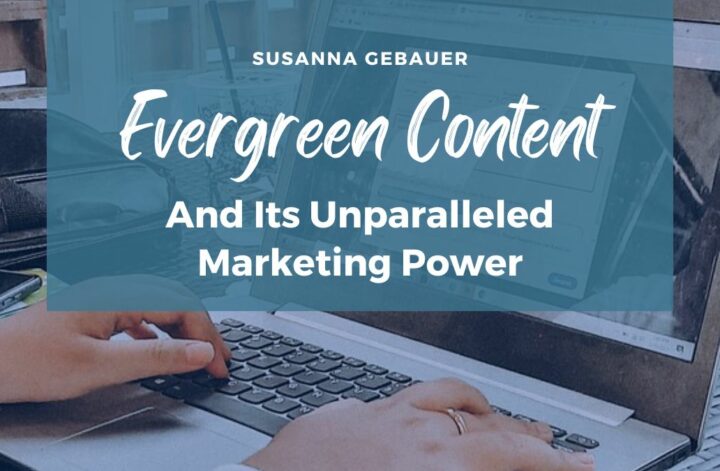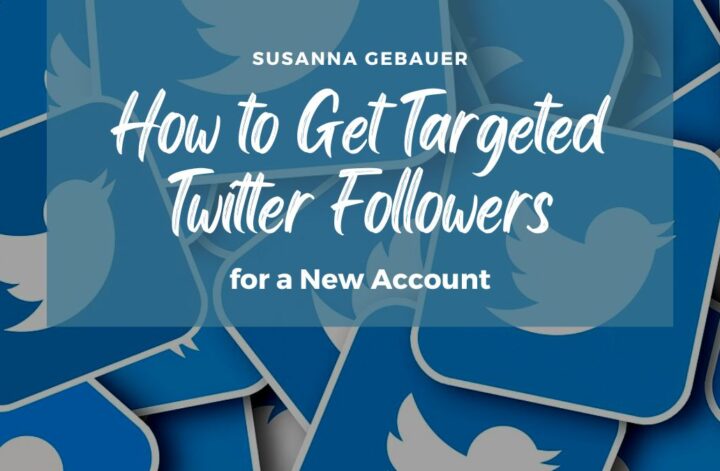All your marketing needs a constant stream of content and value. Evergreen content can be the answer to your need for content. Creating content that stays relevant to your audience for a long time can fill your content reservoir. Here is what evergreen content is, why it is so important for marketing, and how you can create it.
Evergreen content definition
Evergreen content evolves around topics that stay relevant for a long time. It does not grow old or only spike at certain times. Topics for evergreen content are topics with a constant level of interest – resulting in evergreen value for marketing.
Evergreen content does not expire, it is not triggered by events, and it does not contain information that changes with time.

What are evergreen topics?
There are topics that are of interest all the time – and there are topics that are only of interest for a short time or at specific times.
Here are some examples of evergreen topics:
- Weight loss – will never lose interest in our civilization. Content for this topic could be “5 tips to lose weight without being hungry all the time”
- How to start a blog – This topic seems to stay relevant for another couple of years at least. A typical piece of evergreen content for this topic could be titled “How to start a blog as a side hustle”
- How to knit socks – as knitting seems to have grown in interest in recent years, knitting socks will stay relevant for a long time. Evergreen content for this topic could be “6 simple knitting patterns for kid’s socks.”
But there are also evergreen topics that are a little different: Not every evergreen topic necessarily results in evergreen content. Some evergreen topics rather result in news content.
Consider the topic “football scores” Yes, in most countries football scores are of great interest and have always been relevant and will do so in the future. But what people are really looking for is not evergreen content around the term “football scores” but the actual news about current football scores that will be different from week to week.
This is an example of an evergreen topic that results in news content.
Evergreen content that tackles evergreen topics typically results in a continuous search interest with limited variation in the interest over time.
News content
I have already mentioned news content, but what is it? And how is it different from evergreen content?
News content is content that has a peak of interest for a very short time and then the interest in this topic or content diminishes quickly. In Google search interest news content looks like this:

Seasonal content
Not every piece of content falls into the categories of evergreen or news content. There are also topics and content that have a recurring spike in interest in certain events.
For instance, yearly holidays like Christmas or Halloween lead to a short-time interest in topics like “Christmas decorations” or “Halloween costumes.” These interests will recur every year. In Google search interest this yearly recurring interest will look like this:

But not every seasonal content needs to be yearly. Content around the Olympics or elections can spike recurring interest every 4 years.
What type of content is (not) evergreen
Sometimes, the line between evergreen, news, and seasonal content may be a little blurred. To give you more understanding of what content is evergreen and which content probably is not, let me give you some more examples:
I already mentioned that news content is not evergreen. But what about product announcements? They are not evergreen as they usually refer to new features or new products. However, a product description of a product that stays the same for a long time could be evergreen.
Statistics and data are often not evergreen as they tend to get out of date. Studies of pharmaceuticals can also include statistics and these are usually evergreen as they should stay the same as long as the pharmaceutical stays the same. For instance, how many women get pregnant while taking the pill is not news but an evergreen statistic.
What about trends? For instance, fashion trends are often not “news” content with a short spike in attention but they are also not evergreen as people will lose interest in the fashion trend after a couple of weeks or months.
Some bloggers try to give their content better search results by adding a date to it. This may work, but only for a short time. For instance, “how to start a blog in 2022” may earn you more attention in social media and search engines – but only for the year 2022. Once the year turns into 2023 people will start losing interest and either prefer posts like “how to start a blog in 2023” or just go for “how to start a blog” without the year. That means the appendix “in 2022” can turn a blog post old – or you have to update your content.
You can work around this by updating your content and adjusting your title accordingly – more on that later.
The importance of evergreen content for social media marketing
Why is evergreen content so important – especially for social media marketing? Because social media marketing asks for valuable content all the time. And while you can share news content only for a limited time as it is no longer of any value or interest after a short period, evergreen content has a long life span. You can re-use evergreen content in your social media marketing for months and often even years.
Does that not result in boring repetition? Not necessarily. Here is why:
If you share your evergreen content again after some time, chances are high that many of your followers will not have noticed your previous share anyway.
You can easily create a new post with a new image and new teaser text or use a new post format.
However, the most engaging content on social media is often not the content with the highest chance of turning evergreen. According to a study by Backlinko, content that results in engagement on Reddit has the highest chance of turning evergreen. People on Twitter on the other hand seem to engage more with non-evergreen posts.
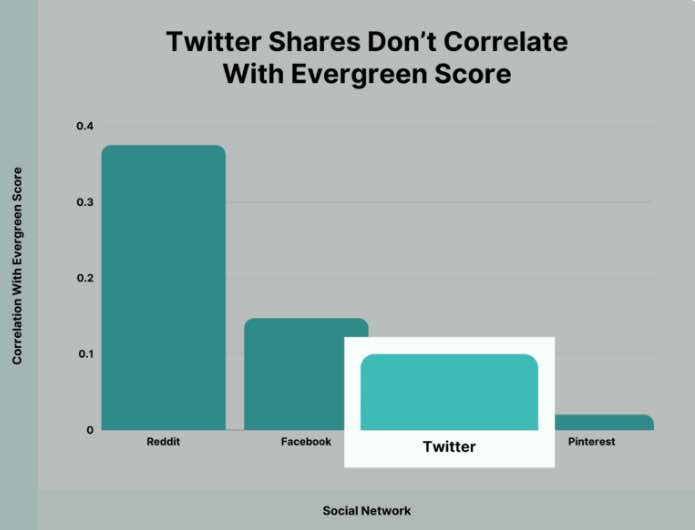
The importance of evergreen content for SEO and search marketing
Each piece of content needs some time until it reaches its peak in search rankings. This may be longer for less famous and frequented blogs than for high-traffic blogs. But it still takes a while for content to show up in searches even for high-profile blogs.
If your content is already outdated once it ranks that cannot be in your interest.
Also, for most businesses, trying to rank a piece of content for more popular keywords includes some active link-building and promotion of the content. That is only possible and only makes sense for content that can have a long life and drive a lot of traffic over time.
Plus, evergreen content often has the ability to earn more backlinks over time.
If you want to use your evergreen content to earn traffic from search engines, keep in mind that Google aims to show the best content on the first page of search results. If you want to see your content listed in the first ten results, you need to create one of the 10 best pieces of content for this topic.
Examples, ideas, and formats
Many of the most common blog post formats can be used for evergreen content. Here are some examples to give you ideas of what kind of content you can create if you are aiming for evergreen:
Ultimate guides:
Ultimate guides are often a little more than (simple) blog posts. They aim to be the go-to resource for one problem that they solve. In most cases, they are created for problems that many people have and keep having.
Often these ultimate guides also serve as pillar content and other content on a blog also points to them.
List of tools:
If your audience needs tools for an important task, you can create a list of tools they can use. These are fairly easy to create. The more extensive and thorough your list is, the more impact it will have. If you update the list from time to time with new tools, this content can remain relevant for a long time.
Glossaries:
How about a list of the most important terms from your niche? There are always some words that need an explanation. These lists are great evergreen content.
Product Reviews:
If the product stays relevant, the review does too (at least as long as the tool still works as well.)
Tips articles:
Many tips are evergreen. That makes tips articles a great format for evergreen content.
Checklists:
Not every piece of evergreen content has to be outstanding or unique. Sometimes a simple checklist of how you can get something done can make awesome, practical and highly relevant content.
Backlinko found that list posts are by far the best when it comes to evergreen content creation – and podcasts don’t seem to have a good chance of turning evergreen. It will not come as a surprise that press releases are not your best choice for your evergreen posts.
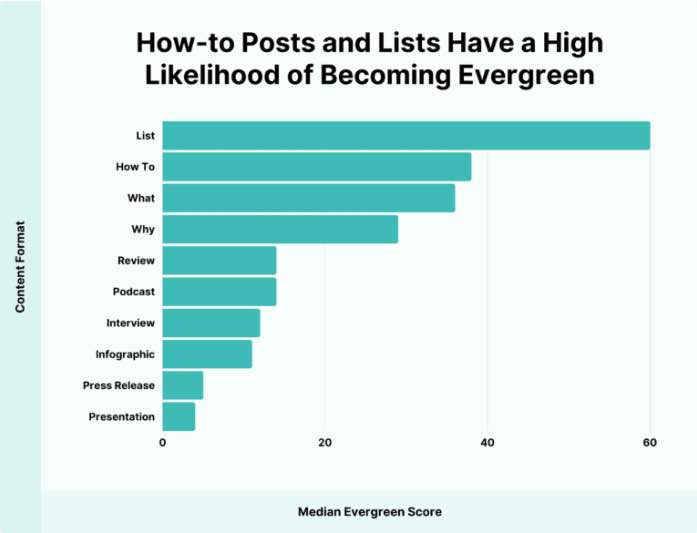
How to create evergreen content – the evergreen content creation process
Now, we learned a lot about evergreen content and what it is. But you still have to find ideas for your own evergreen content.
So here is a simple process for how you can find ideas for awesome evergreen content in your area of interest.
- Make a list of topics first. You may already have a list of topics and just need to decide which of them is going to make evergreen content.
- From your list of topics, eliminate all topic ideas that relate to an event, news, launch, or similar.
- Remove all news-related content.
- Remove everything that may grow old fast for instance trends.
- What you now have on your list should be mostly evergreen. You can now do some keyword or Google trend research to figure out which of your evergreen topic ideas have a (lasting) demand. Choose the best of your ideas to create content.
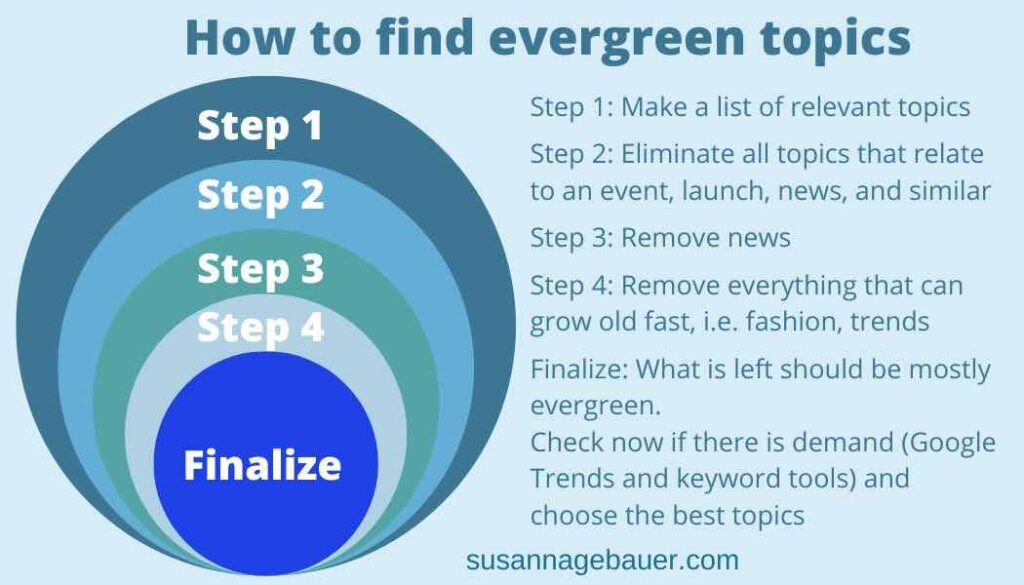
Now, you have a topic for your evergreen content but there is more to creating content that can live a long life:
- answer questions your audience will have about this topic
- add visual content like graphics, videos
- add links from your existing content to your new piece of content to give your content a good start
- check the existing content on this topic, and aim for creating even more valuable content
Promoting evergreen content
Many great content pieces fail to bring the results the creator was looking for. The reason is often the lack of promotion.
The great benefit of evergreen content is that you can still promote it after months – even years. If your first attempt at content promotion for a piece of evergreen content failed, no problem. You can still start a social media campaign for it, promote it with an email campaign or build some more backlinks to it.
That is something you cannot do for news content. If you missed your one chance of content promotion in the limited time the news content was relevant, this content is worthless.
Evergreen content best practices
There are some things you should consider when you are creating evergreen content. The following tips can help you to make your evergreen content even more successful:
Why you need to update evergreen content and how
Even evergreen content can turn old, things can change, and you may gain more insight and know even better.
Whenever you have some ideas to improve your content significantly or you think that some of your original content is outdated and needs an overhaul you should perform some updates.
If your updates are significant enough, you can also consider republishing the content with a new publishing date.
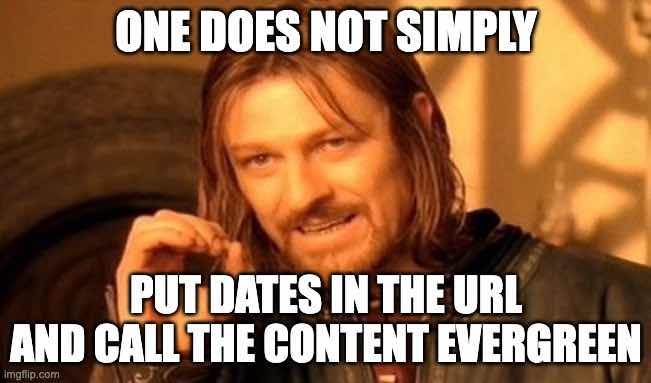
Why your evergreen content should not have a dated URL
URLs of blog posts often contain a publishing date:
ayzanyc.com/blog/2012/12/difference-between-hot-chocolate-hot-cocoa/
If you want to use your content as evergreen content that is not ideal. Because the date in the URL instantly lets the content age over time. Readers can instantly see how old the content grows.
If years in the URL are bad – what about a year in the title?
Some bloggers try to give their content an extra boost by adding a year to their title:
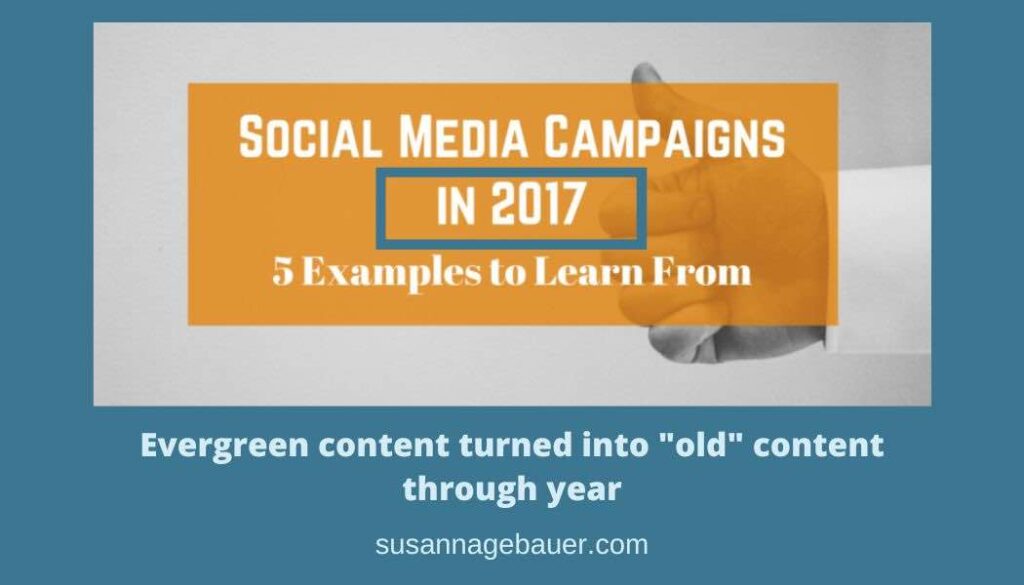
This can result in added traffic when the content is fresh and the year is current or the future. However, as the mentioned year grows older the content ages with it.
But you can still use this extra push: simply update your content for the current year and then change the title.
Does this work?
Backlinko found that content that contains the most recent years in the title has the best evergreen score compared to content with older years:
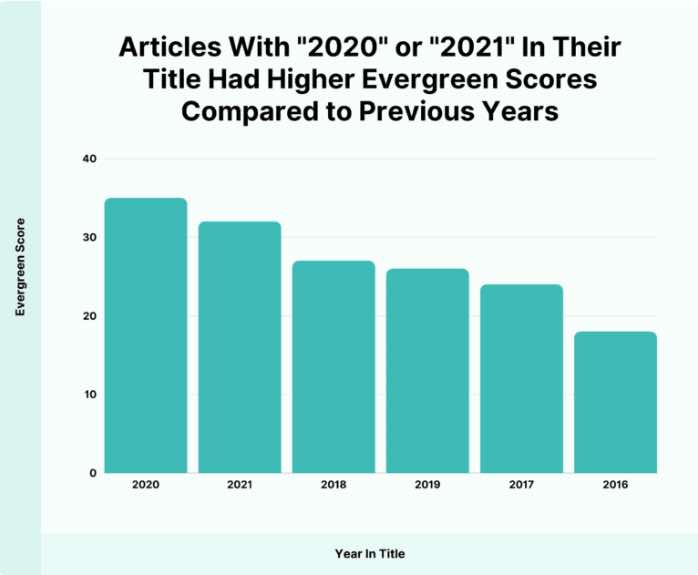
This effect may partly be due to the fact that people try to find newer content by adding a current year to their search terms.
Terms you should avoid in evergreen content
I already talked about the problems with using a year or a date in your blog titles. But there are more terms you should avoid if you are aiming for evergreen content. Here are some examples:
- yesterday
- last month
- today
- new
- current
Almost every term that refers to a time – especially a time linked to current events or a current date – lets your content seem irrelevant if that time has passed or the date it refers to is long gone.
The power of evergreen content
Evergreen, news, and seasonal content all have their advantages and disadvantages. A good mix of the three is often the best option for a blog and content marketing strategy.
However, many social media marketing strategies and search engine optimization strongly rely on evergreen content. Content that you can use again has lasting marketing power. It can be repurposed into new content forms and more social media content. Promotion for evergreen topics can build over time – you get a second chance to drive attention to the content you created with so much care.
Do you need help with your content marketing and blogging? Join me for a 4-day email course and learn the basics of content marketing:


